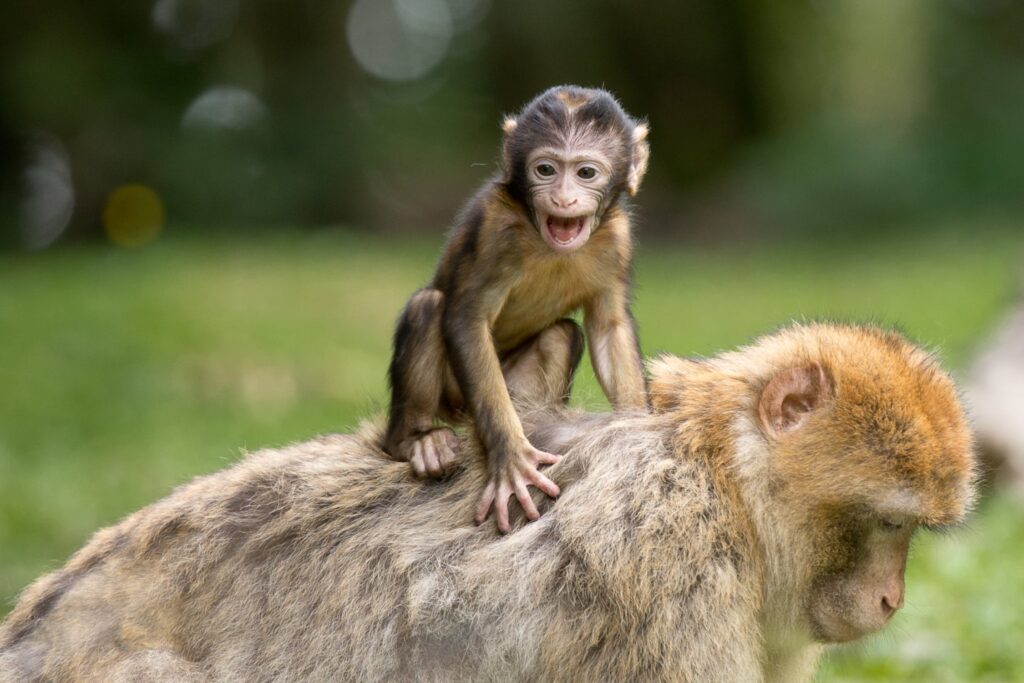Around the world, a wide variety of monkeys exhibit distinct ways of existence, varying in their dimensions, form, and hue. Regardless of these differences, they consistently demonstrate intellect and sociability. Monkey Day, celebrated on December 14, recognizes these animals and promotes awareness about the dangers that put their survival at risk.
Monkeys used in scientific experiments
Adding to these concerns is the participation of monkeys in scientific investigations, which has sparked ethical discussions because of their genetic resemblance to humans and concerns about their well-being.
Although monkeys are used in research to improve our knowledge of human physiology and diseases, there are ethical concerns regarding how these animals are treated in laboratory environments.
Opponents claim that invasive techniques, seclusion, and possible injury to primates raise ethical concerns about the desire for scientific understanding. The ongoing discussion highlights the importance of more openness, improved animal care standards, and the encouragement of alternative research approaches.
This moral predicament emphasizes the significance of finding a delicate equilibrium between scientific advancement and the humane treatment of animals, emphasizing the need for extensive conservation initiatives to guarantee the welfare and survival of these extraordinary creatures.
Despite these hurdles, there is still optimism. Conservation initiatives are currently taking place worldwide, spearheaded by organizations dedicated to safeguarding monkey habitats, addressing the issue of illegal wildlife trading, and engaging local populations in sustainable practices. Efforts such as the Gibbon Conservation Center and the Pan African Sanctuary Alliance demonstrate a commitment to protecting these primates and the environments they inhabit.
Let’s go more to have a better knowledge of these intriguing creatures.
Not all primates are monkeys
At times, the term “monkey” is employed to describe any primate, although in actuality, prosimians (such lemurs, tarsiers, and lorises), apes (such as chimpanzees, gorillas, and humans), and monkeys belong to separate branches of the evolutionary tree. An important distinction is in their tails. Although the majority of monkeys possess tails, apes and primates do not.
Monkeys inhabit several regions
Monkeys can be found on all continents except Antarctica and Australia. They tend to favor residing on trees within warm and humid tropical rainforests. The Amazon Rainforest in South America and the Congo Basin in Central Africa are two significant locations. However, several types of monkeys have shown impressive adaptability, thriving in challenging environments such as snowy highlands or arid savannas.
They enhance their connections through grooming
Picking dirt, bugs, and other debris off their pals is seen as a gesture of respect and affection among monkeys, rather than solely for personal hygiene purposes. Grooming techniques not only contribute to monkeys’ well-being but also promote their comfort and enhance their social connections. Vervet monkeys groom each other’s fur, which helps to make it fluffier and thicker, as shown by studies.
Monkeys select their sleeping locations with caution
Because monkeys sleep in trees during the night, they are very particular about their sleeping spots. Usually, they choose towering, isolated trees whose branches do not make contact with one another. This is believed to discourage predators because it hinders their ability to navigate between branches. Moreover, it reduces the risk of being bitten by insects and protects against mosquitoes that transmit malaria.
They possess exceptional communication abilities
Monkeys make different sounds. Gelada baboons, for example, possess a minimum of 20-30 different vocalizations. They also interact with each other utilizing several forms of nonverbal communication, such as body language, postures, facial expressions, and gestures. These include lip-smacking, screams, grunts, and warning cries. In addition, the howler monkey possesses the most powerful vocalization of any terrestrial creature on the planet. Their sound can occasionally be heard from a distance of three kilometers.
Monkeys are at risk
Monkeys are at risk because of the dangers in their environment. The trading of animals that is against the law and disputes with humans are difficulties that they often deal with. Nevertheless, it is important to recognize that their ability to survive is not solely their duty; it is a collective obligation for all of us. The absence of these lively protectors would indicate a breakdown in our responsibility as stewards of the planet.
